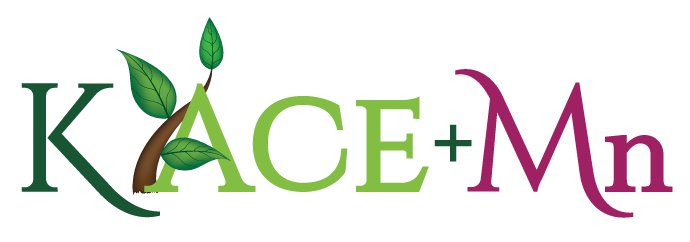
0-0-14 + 2% Manganese Acetate Liquid Fertilizer
As demonstrated by Mulder's chart, when potassium is applied, the plant's requirement for manganese also increases. To ensure the plant's requirement for manganese is met while reaping the benefits of external potassium application, we at CultivAce created K Ace+Mn. This convenient blend allows the grower to apply both nutrients in a single shot, saving time while preventing nutrient deficiency and yield loss.
Factors Affecting Manganese Availability:
High pH levels
High organic matter content
Heavy iron applications
High calcium applications
Significant zinc applications
Functions of Manganese as a Nutrient:
Assimilation of CO2 in Photosynthesis: Manganese aids in converting CO2 into carbohydrates, the primary energy source for plants.
Assimilation of Nitrate Nitrogen: Essential for nitrate nitrogen assimilation, supporting amino acid and protein synthesis.
Essential for Seed Formation: Critical for pollen viability, fertilization, and proper embryo development.
Electron Transport During Photosynthesis: Involved in electron transport, essential for producing energy-rich molecules like ATP and NADPH.
Incorporating manganese ensures plants have access to the necessary manganese for optimal growth, reproduction, and seed development.
Benefits of Manganese as a Nutrient
Assimilates CO2 in photosynthesis for enhanced energy production.
Facilitates nitrate nitrogen assimilation for optimal nitrogen metabolism.
Essential for seed formation and reproductive capacity.
Supports electron transport during photosynthesis for robust plant growth.
Downloads
Trials
2014 Hazelnut Trial | Download
The Benefits of Potassium Acetate
Potassium is vital for various physiological processes, including increased sugar and carbohydrate production, efficient transport and storage, and optimal water transpiration. It is especially effective when applied at key growth stages, such as before flowering and during the development of fruits, nuts, pods, and vegetables.
Factors Affecting Potassium Availability:
High calcium applications
High nitrogen applications
Low soil moisture
Compacted soil
Low soil temperature
Dry soil environments
Functions of Potassium as a Nutrient:
Cell Wall Development: Crucial for robust cell wall development, enhancing plant structure and resilience.
Controls Opening and Closing of Leaf Stomata: Regulates stomatal function for efficient water regulation and gas exchange.
Water Transpiration: Influences the release of water vapor, aiding in cooling mechanisms and nutrient uptake.
Sugar & Carbohydrate Production, Transport, and Storage: Involved in synthesizing and transporting energy-rich compounds like glucose and starch.
Incorporating K-Ace into your fertilization program ensures the correction of potassium deficiency, promoting plant vigor, improving water regulation, and enhancing crop productivity.
Why Choose K Ace+Mn?
Combining the benefits of both potassium and manganese, K Ace+Mn ensures your plants receive the essential nutrients they need in a single application. This blend saves time and ensures balanced nutrient uptake, preventing deficiencies and optimizing plant health and yield potential—Trust CultivAce for high-quality solutions tailored to meet your crop's nutrient requirements.
Guaranteed Analysis
- Potassium (K) ... 14.0%
- Manganese (Mn) ... 2.0%
10.1 lb/gal @ 68oF
COMPATIBILITY: This product is compatible with most pesticides, however, it is not possible to test all pesticide mixes. A jar test is recommended before use.
General Use Recommendations
DILUTION: Field and row crops: 3 to 20 Gallons by air, 10 to 40 gallons by ground. Tree crops: concentrate 50 to 100 gallons, Dilute 100 to 500 gallons.
NET CONTENTS: 2.5 GALLONS (9.46L)
Net weight 25.25 pounds
Suggested Uses
(rates par acre)
Crops such as, but not limited to:
Alfalfa, hay and other forage crops :: 2 – 4 quarts after early spring growth, and after each cutting..
Apples, cherries, peaches, almonds, walnuts, pears, stone, pome fruits, citrus and nuts :: 1 – 4 quarts per acre at 2 to 4 week intervals.
Barley, oats, wheat, rice, and other small grains :: 1 – 4 quarts - Apply at tillering, early boot and flag leaf emergence.
Beans, peas and other legumes :: 1 – 3 quarts - Apply at early bud, repeat after bloom and at pod fill.
Cabbage, broccoli, carrots, onions, tomatoes and other vegetables grown for seed :: 1 – 4 quarts - Apply when growth is 4 –8” high. Repeat every 2 weeks as needed.
Corn, field and sweet :: 1 – 4 quarts - Apply when 10 – 20” high, repeat in 2 –4 weeks as needed and at kernel fill.
Sugar Cane :: 1 – 4 quarts per acre.
Grapes :: 1 – 4 quarts - Apply pre-bloom and post-bloom as needed.
Hops :: 1 – 4 quarts
Lettuce, celery, spinach and other leafy vegetables :: 1 – 4 quarts - Apply after transplanting or thinning, repeat as needed.
Hazelnuts, pistachios and other deciduous trees :: 1 – 4 quarts - Apply mid-May. Repeat in 2-4 week intervals.
Potatoes :: 1 – 3 gallons - Apply at tuber initiation, repeat in 2 – 4 week intervals.
Raspberries, blueberries, strawberries, blackberries :: 1 – 3 quarts - Apply prebloom repeat every 2-4 weeks.
Grasses grown for seed :: 1-4 quarts. Apply at early boot and flag leaf emergence, and every 2-3 weeks.
Turf :: 2-8 ounces per 1000 square feet.
Information regarding the contents and levels of metals in this product is available on the internet at http://www.aapfco.org/metals.htm
CAUTION: KEEP OUT OF THE REACH OF CHILDREN, HARMFUL IF SWALLOWED
NOTICE: Manufacturer makes no warranties, expressed or implied. The buyer assumes all risks associated with the use of this product. In the event of damage resulting from a breach of warranty, the buyer agrees to accept a refund of the purchase price as full discharge of the manufacturers liability.



